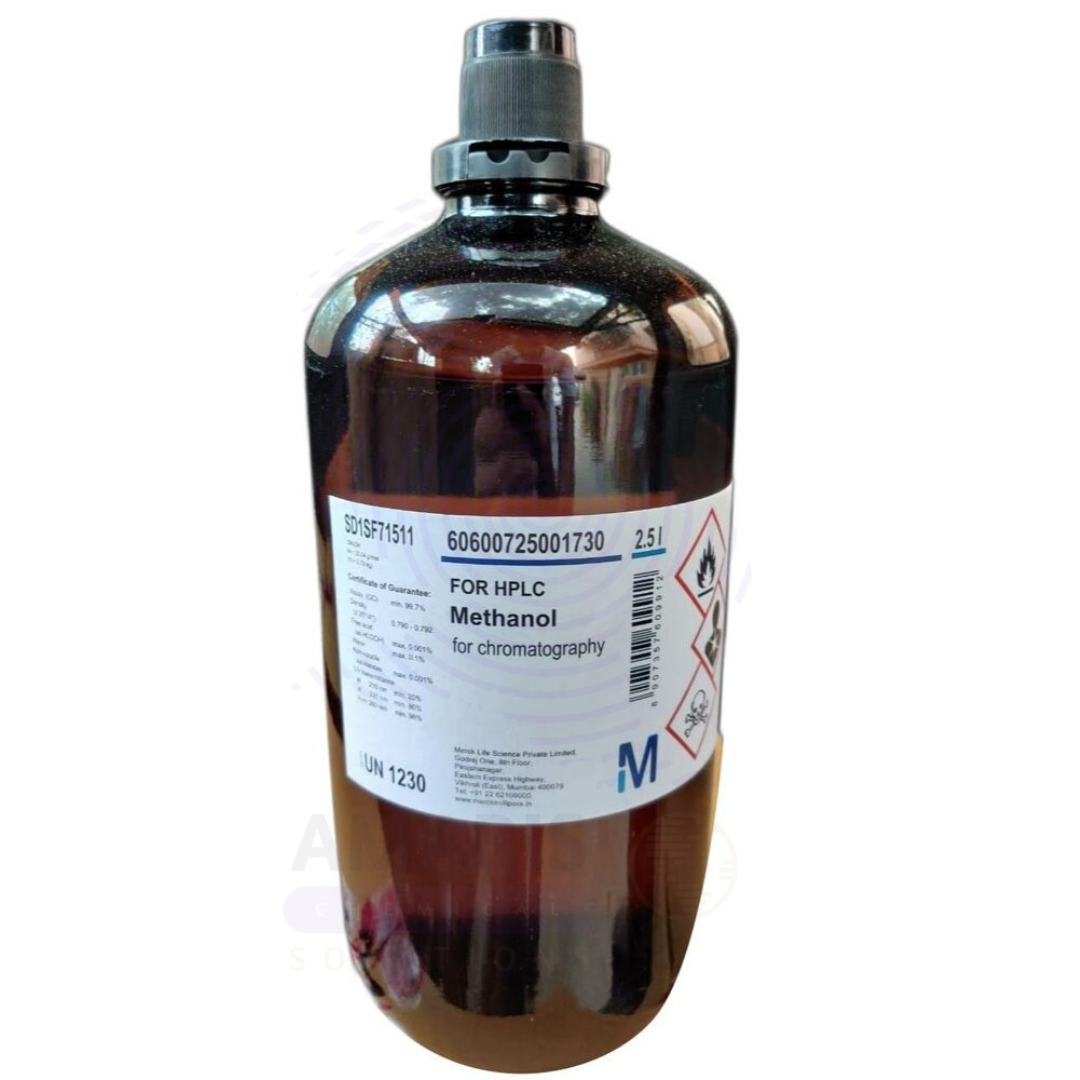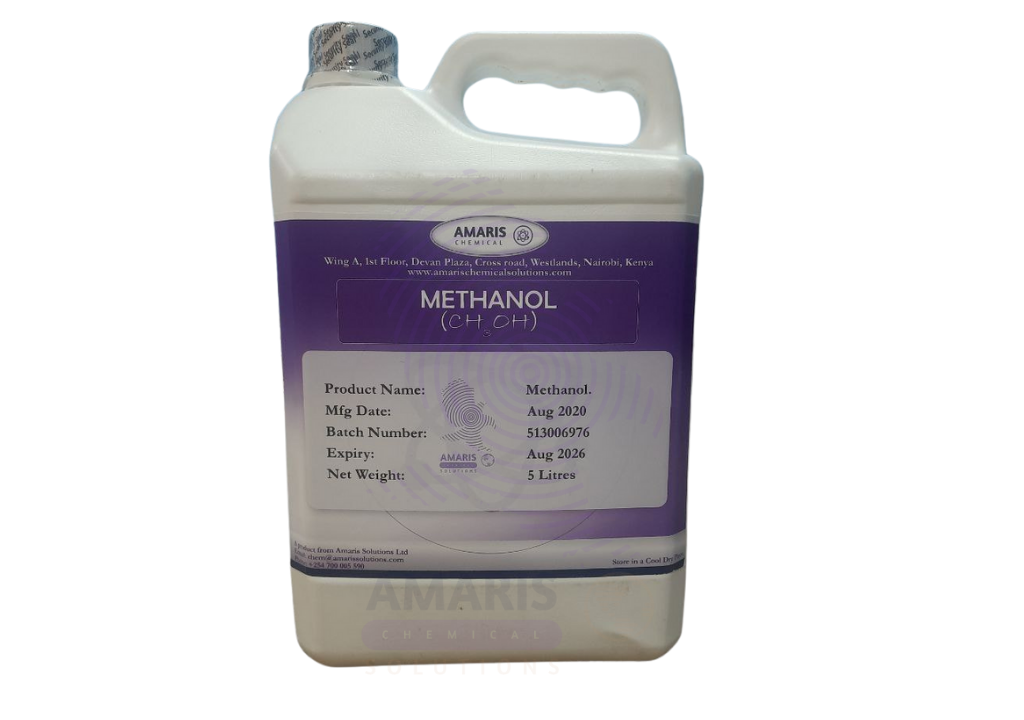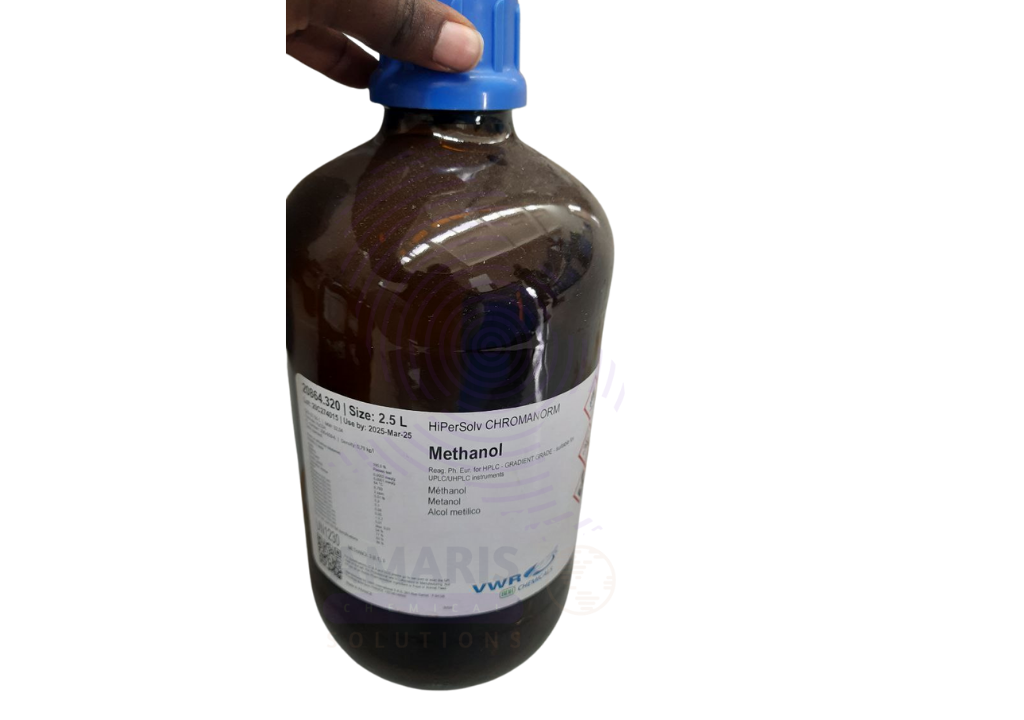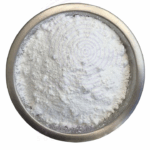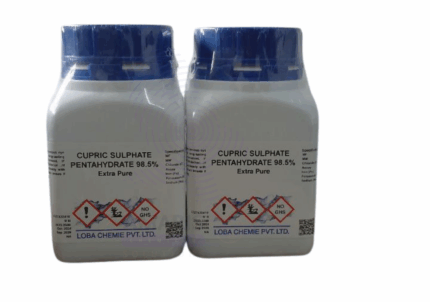
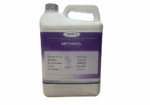
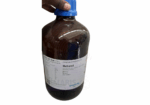
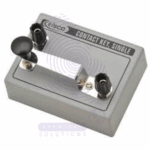
Methanol Extra Pure
$ 30.35 Original price was: $ 30.35.$ 30.23Current price is: $ 30.23.
Methanol Extra Pure is a clear, colorless, and highly volatile liquid with a mild alcohol-like odor, refined to an exceptional level of purity. It is widely used as a solvent in laboratories and industrial settings due to its excellent miscibility with water and many organic compounds. Methanol serves as a key reagent in chemical synthesis, particularly in the production of formaldehyde, methyl esters, and biodiesel. In analytical chemistry, it’s used for chromatography and spectroscopic applications where high purity is essential. Its rapid evaporation rate and strong solvency make it ideal for cleaning delicate equipment and preparing lab samples.
Methanol Extra Pure
Primary Uses
- Solvent in Chemical Reactions:
- Widely used as a polar protic solvent in organic synthesis and chromatographic analysis due to its excellent miscibility with water and organic solvents.
- Sample Preparation & Extraction:
- Commonly applied in extraction, dilution, and dissolution of analytes in spectroscopy, HPLC, and GC methods.
- Reagent in Organic Synthesis:
- Acts as a methylating agent or starting material in producing esters, formaldehyde, and other organic compounds.
Secondary Uses
- Fuel for Spirit Lamps & Calorimetry:
- Used as a clean-burning fuel for lab burners, calorimeters, and flame tests.
- Preservative for Biological Samples:
- Sometimes used for tissue preservation and fixation in histology and microbiology.
- Antifreeze Studies:
- Employed in freezing point depression experiments and in the formulation of coolant simulations.
| PACK SIZE |
2.5 Litres Glass bottle |
|---|
1. Basic Identification Attributes
- Chemical Name: Methanol
- Synonyms: Methyl alcohol, Wood alcohol
- CAS Number: 67-56-1
- Molecular Formula: CH₃OH
- Molecular Weight: 32.04 g/mol
- Appearance: Colorless liquid
- Odor: Slightly sweet, alcohol-like odor
- Grade: Extra Pure
- Solubility: Completely miscible with water, ethanol, ether, and acetone
- Boiling Point: ~64.7 °C
- Melting Point: ~–97.6 °C
2. Safety & Hazard Attributes
- GHS Classification:
- Flammable liquids (Category 2)
- Acute toxicity, oral (Category 3)
- Acute toxicity, inhalation (Category 3)
- Specific target organ toxicity – single exposure (Category 1, affects optic nerve and central nervous system)
- Hazard Statements:
- H225: Highly flammable liquid and vapor
- H301 + H311 + H331: Toxic if swallowed, in contact with skin or if inhaled
- H370: Causes damage to organs (eyes, nervous system)
- Precautionary Statements:
- P210: Keep away from heat/sparks/open flames
- P280: Wear protective gloves/eye protection
- P260: Do not breathe vapors
- P301+P310: IF SWALLOWED: Immediately call a poison center/doctor
- P370+P378: In case of fire: Use CO₂, dry chemical, or alcohol-resistant foam
- Personal Protective Equipment (PPE):
- Chemical-resistant gloves (e.g. nitrile)
- Safety goggles
- Lab coat
- Fume hood for handling
- First Aid Measures:
- Inhalation: Move to fresh air; seek immediate medical attention
- Skin Contact: Wash thoroughly with soap and water
- Eye Contact: Rinse with water for at least 15 minutes
- Ingestion: Do NOT induce vomiting; seek immediate medical help
- Fire Hazards:
- Highly flammable
- Vapors can travel to ignition sources
- Emits toxic fumes (carbon monoxide and formaldehyde) when burned
3. Storage & Handling Attributes
- Storage Conditions:
- Store in a cool, well-ventilated place
- Keep container tightly closed
- Keep away from heat, sparks, and open flame
- Use explosion-proof equipment
- Handling Tips:
- Use only in well-ventilated areas or fume hood
- Prevent vapor buildup
- Avoid contact with skin and eyes
4. Laboratory Applications
- Primary Uses:
- Solvent in extractions, chromatography, and organic synthesis
- Reagent in biodiesel production and esterification
- Used in DNA precipitation and preservation
- Secondary Uses:
- Fuel for spirit burners and lab stoves
- Cleaning agent for glassware and lab tools
- Model compound in physical chemistry and spectroscopy studies
SAFETY PRECAUTIONS
Personal Protective Equipment (PPE):
- Wear lab coats, chemical-resistant gloves (e.g., nitrile), and safety goggles.
- Use in a fume hood or well-ventilated area.
Handling:
- Avoid inhalation, ingestion, and contact with skin or eyes.
- Do not use near open flames, sparks, or hot surfaces.
- Wash thoroughly after handling.
Storage:
- Store in a cool, dry, and well-ventilated area.
- Keep the container tightly closed and away from heat, flames, and oxidizers.
- Store in flammable liquid storage cabinets.
FIRST AID MEASURES
Inhalation:
- Move the person to fresh air immediately.
- If breathing is difficult, give oxygen and seek emergency medical help.
Skin Contact:
- Wash with soap and water.
- Remove contaminated clothing.
- Seek medical attention if irritation develops.
Eye Contact:
- Rinse cautiously with plenty of water for at least 15 minutes.
- Remove contact lenses if present and easy to do.
- Seek immediate medical attention.
Ingestion:
- Do not induce vomiting.
- Rinse your mouth thoroughly with water.
- Seek immediate medical attention — methanol is toxic if ingested.
FIRE FIGHTING MEASURES
Flammability:
- Highly flammable liquid and vapor.
Extinguishing Media:
- Use alcohol-resistant foam, dry chemical, or carbon dioxide (CO₂).
- Water spray can be used to cool exposed containers.
Hazardous Combustion Products:
- May emit carbon monoxide (CO) and carbon dioxide (CO₂) when burned.
Firefighter Protection:
- Wear self-contained breathing apparatus (SCBA) and full protective clothing.


 Preservatives(food)
Preservatives(food) Flavor Enhancers
Flavor Enhancers Acidulants
Acidulants Sweeteners
Sweeteners Antioxidants
Antioxidants Colorants(food)
Colorants(food) Nutraceutical Ingredients (food)
Nutraceutical Ingredients (food) Nutrient Supplements
Nutrient Supplements Emulsifiers
Emulsifiers
 Collectors
Collectors Dust Suppressants
Dust Suppressants Explosives and Blasting Agents
Explosives and Blasting Agents Flocculants and Coagulants
Flocculants and Coagulants Frothers
Frothers Leaching Agents
Leaching Agents pH Modifiers
pH Modifiers Precious Metal Extraction Agents
Precious Metal Extraction Agents
 Antioxidants(plastic)
Antioxidants(plastic) Colorants (Pigments, Dyes)
Colorants (Pigments, Dyes) Fillers and Reinforcements
Fillers and Reinforcements Flame Retardants
Flame Retardants Monomers
Monomers Plasticizers
Plasticizers Polymerization Initiators
Polymerization Initiators Stabilizers (UV, Heat)
Stabilizers (UV, Heat)
 Antifoaming Agents
Antifoaming Agents Chelating Agents
Chelating Agents Coagulants and Flocculants
Coagulants and Flocculants Corrosion Inhibitors
Corrosion Inhibitors Disinfectants and Biocides
Disinfectants and Biocides Oxidizing Agents
Oxidizing Agents pH Adjusters
pH Adjusters Scale Inhibitors( water)
Scale Inhibitors( water)
 Antioxidants(cosmetic)
Antioxidants(cosmetic) Emollients
Emollients Fragrances and Essential Oils
Fragrances and Essential Oils Humectants
Humectants Preservatives
Preservatives Surfactants(cosmetic)
Surfactants(cosmetic) Thickeners
Thickeners UV Filters
UV Filters
 Fertilizers
Fertilizers Soil Conditioners
Soil Conditioners Plant Growth Regulators
Plant Growth Regulators Animal Feed Additives
Animal Feed Additives Biostimulants
Biostimulants Pesticides (Herbicides, Insecticides, Fungicides)
Pesticides (Herbicides, Insecticides, Fungicides)
 Active Pharmaceutical Ingredients (APIs)
Active Pharmaceutical Ingredients (APIs) Excipients
Excipients Solvents(pharmaceutical)
Solvents(pharmaceutical) Antibiotics
Antibiotics Antiseptics and Disinfectants
Antiseptics and Disinfectants Vaccine Adjuvants
Vaccine Adjuvants Nutraceutical Ingredients (pharmaceutical)
Nutraceutical Ingredients (pharmaceutical) Analgesics & Antipyretics
Analgesics & Antipyretics
 Analytical Reagents
Analytical Reagents Solvents(lab)
Solvents(lab) Chromatography Chemicals
Chromatography Chemicals Spectroscopy Reagents
Spectroscopy Reagents microbiology-and-cell-culture-reagents
microbiology-and-cell-culture-reagents Molecular Biology Reagents
Molecular Biology Reagents Biochemical Reagents
Biochemical Reagents Inorganic and Organic Standards
Inorganic and Organic Standards Laboratory Safety Chemicals
Laboratory Safety Chemicals Specialty Laboratory Chemicals(Special Laboratory Equipment)
Specialty Laboratory Chemicals(Special Laboratory Equipment)
 Demulsifiers
Demulsifiers Hydraulic Fracturing Fluids
Hydraulic Fracturing Fluids Scale Inhibitors(oil)
Scale Inhibitors(oil) Surfactants(oil)
Surfactants(oil) Drilling Fluids
Drilling Fluids
 Dyes and Pigments
Dyes and Pigments Bleaching Agents
Bleaching Agents Softening Agents
Softening Agents Finishing Agents
Finishing Agents Antistatic Agents
Antistatic Agents
 Admixtures
Admixtures Waterproofing Agents
Waterproofing Agents Sealants and Adhesives
Sealants and Adhesives Curing Compounds
Curing Compounds Concrete Repair Chemicals
Concrete Repair Chemicals Anti-Corrosion Coatings
Anti-Corrosion Coatings
 Surfactants(cleaning)
Surfactants(cleaning) Builders
Builders Enzymes
Enzymes Solvents (Cleaning)
Solvents (Cleaning) Fragrances
Fragrances
 Electronic Chemicals
Electronic Chemicals Catalysts
Catalysts Lubricants
Lubricants Photographic Chemicals
Photographic Chemicals Refrigerants
Refrigerants Automotive chemicals
Automotive chemicals Pyrotechnic Chemicals
Pyrotechnic Chemicals
 Biodegradable Surfactants
Biodegradable Surfactants Bio-based Solvents
Bio-based Solvents Renewable Polymers
Renewable Polymers Carbon Capture Chemicals
Carbon Capture Chemicals Wastewater Treatment Chemicals
Wastewater Treatment Chemicals
 Pigments
Pigments Solvents(paint)
Solvents(paint) Specialty Coatings
Specialty Coatings Binders/Resins
Binders/Resins Additives
Additives Driers
Driers Anti-Corrosion Agents
Anti-Corrosion Agents Functional Coatings
Functional Coatings Application-Specific Coatings
Application-Specific Coatings
 Fresh Herbs
Fresh Herbs Ground Spices
Ground Spices Whole Spices
Whole Spices Spice Blends
Spice Blends Dried Herbs
Dried Herbs
 Leavening Agents
Leavening Agents Dough Conditioners
Dough Conditioners Flour Treatments
Flour Treatments Fat Replacers
Fat Replacers Decoratives
Decoratives Preservatives(baking)
Preservatives(baking)
 Plasticizers & Softeners
Plasticizers & Softeners Reinforcing Agents
Reinforcing Agents Adhesion Promoters
Adhesion Promoters Vulcanizing Agents
Vulcanizing Agents Antidegradants
Antidegradants Blowing Agents
Blowing Agents Fillers & Extenders
Fillers & Extenders Accelerators & Retarders
Accelerators & Retarders